At the start of the COVID-19 pandemic, ACS Reactions switched up their usual content to bring viewers reliable coronavirus info from the experts. One year later, they’re checking back in with some of those experts and asking, “what do we know now that we didn’t back then?”
Video Transcript:
So I am in week 3 of self quarantining, and now we’re in week
(dramatic music)
47!
Last spring, we talked with a bunch of experts about what was then a new coronavirus. A virus that since then has killed almost 500,000 people in the U.S. and over 2 million people globally.
So today, we’re checking back in with some of those experts and asking what do we know now that we didn’t know then? And how is that information gonna help us in the coming months or years?
(bright music)
(laughing)
Sorry.
(laughing)
Sorry, please continue.
At the start of the pandemic, we were all wondering when we were gonna get a vaccine so that life could return to normal. I called up virologist Dr. Ben Neuman, who has studied coronaviruses for decades. And I asked him what do scientists need to know to create a vaccine?
He said it’s critical to have an in-depth understanding of the proteins that allow the virus into our cells. Fortunately, we already knew a couple of key things about this coronavirus because a similar one caused the 2003 SARS outbreak.
[Dr. Neuman] All right, so the SARS coronavirus has a protein on the outside called the spike protein. And that is going to bump into the ACE2 on the outside of a lung cell.
[Sam] Researchers also knew that SARS-CoV-2 wouldn’t be able to infect cells without a co-receptor in addition to ACE2. The co-receptor modifies the spike, essentially activating it so that once it does bind to ACE2, it can then go on to infect the cell.
(cash register chimes)
At the time, they suspected that the co-receptor was probably a protein called TMPRSS2.
[Dr. Neuman] Since then, we have learned about all the other TMPRSS proteins because, you know, if there’s a two, there’re a bunch more, (laughs) I think they go up to 11 or 12, and it turns out that at least half of these are able to support infection.
[Sam] SARS-CoV-2 can use a bunch of these TMPRSS proteins which are all over the place. Brain cells, lung cells, heart cells, cells in your stomach. So you would think that all of these cell types would be able to get infected.
[Dr. Neuman] People were expecting a lot more direct infection of the heart, a lot more direct infection of the brain. Evidence for both of those is still not particularly strong.
[Sam] There have been some reports of patients with heart inflammation or symptoms in other parts of the body, but actual direct infection by the virus seems pretty rare. After a year, it’s clear that it’s mainly infecting our lungs, but it’s not clear as to why.
So why does figuring that out matter? Why should we care about this? We already have a couple of vaccines against SARS-CoV-2.
Well, you’ve seen the news. There are other variants of SARS-CoV-2 that are emerging, and if this virus mutates to the point where current vaccines are no longer effective, we’re going to need to re-engineer them.
And if we wanna do that, it’s critical that we have as in depth an understanding of this virus as possible.
In the meantime, some of these emerging variants could be more transmissible. Which means wearing a mask is more important than ever. Early info on masks, at least in the U.S. was confusing. So back in April, we talked with an expert to try to get a straight answer.
N-95 better than surgical mask, better than cloth mask. But when you set that against what your actual risk and needs are by population, a cloth mask is perfectly fine for the general public.
[Sam] And it turns out, well?
[Dr. Soe-Lin] I’ve always said that the three, my three favorite words in the English language, are not like, ‘I love you’, it’s ‘you were right’. (laughing)
[Sam] There are now dozens of studies showing that cloth masks work, but that’s not to say that all cloth masks are created equal.
Here’s what we’ve learned so far: multilayer high thread count cloth masks block upwards of 80% of all respiratory droplets coming from the person wearing the mask, and more than half of the really small droplets and particles.
Even those tiny particles that do get through, don’t travel as far. The effectiveness of some cloth masks even seems to be on par with surgical masks.
And we’ve learned that masks don’t just protect other people, they protect the person wearing the mask too. It may seem obvious now, but early in the pandemic, we didn’t know that.
[Dr. Soe-Lin] I didn’t think it was gonna be this effective. I just, at the beginning was feeling somewhat desperate that we didn’t have anything. So I thought, you know, all of the primary literature had shown that maybe it was going to be a 20% effect. I thought, well, 20% is better than nothing. You should take that. I didn’t think it was going to be this sweeping.
With these new variants of SARS-CoV-2, that could be more transmissible, some European countries are requiring that people wear medical grade masks when in public.
This is a quickly changing situation. So keep an eye on CDC guidelines. We left a link in the video description. Either way, it’s clear that masks work. Social distancing works. But there was another recommendation that we were getting early on.
[Dr. Soe-Lin] Remember they were still saying, “wash your hands”?
[Sam] Yeah.
[Dr. Soe-Lin] I mean like wash your hands is important, you should wash your hands anyway but I wish we could wash our hands out of this epidemic. I mean, it wasn’t even fully appreciated how aerosolized this virus was.
[Sam] Soap was the thing at the start of the pandemic. Our first COVIDeo, Get it? COVID E O. Our first COVIDeo was about the chemistry behind how soap kills SARS-CoV-2.
These surfactants can actually wedge their way into the lipid bilayer, lipophilic end first, and when they do, the virus will break apart. (cracking sound)
[Sam] Soap does kill the virus. That hasn’t changed. It’s just that at the time, we didn’t realize that we were almost exclusively spreading this virus through the air.
[Sam] Dr. Soe-Lin was right. Masks are a great way to help prevent infection. But what do we do for someone who does get infected? Last May, we looked into drugs that have the potential to block SARS-CoV-2 infection, or stop it before it gets really bad. Those drugs are called antivirals.
Whenever you take a drug so far as to be in people, there’s always a hope that you can revive it for something else. And sometimes drugs can affect more than one virus even if you developed it for Ebola. So people said, let’s test it.
He’s talking about a drug that you might actually have heard of. It’s called Remdesivir.
[Sam] In the fall of last year, the NIH concluded that Remdesivir works, kinda. It seems to shorten recovery time and it may help prevent progression to more severe versions of COVID-19. But here’s the problem.
[Vincent Racaniello] It’s main effect is to block virus reproduction. And that is not your problem once you’re in the hospital. Your problem is you have an over exuberant immune response that is causing all these problems in your lungs and other organs as well.
That’s one of the things we have learned that, you know, this disease, you initially have a viral infection of your upper tract, which lasts maybe 10 days, but then you have this immune response that causes incredible disease.
And so they were giving Remdesivir to people who were hospitalized. And by then, an antiviral is not what you need. It’s too late. At that point, you don’t need an anti-viral, you need to dampen down your immune response.
[Sam] Once you’re at the point where you need to go to the hospital, SARS-CoV-2 has had a lot of time to replicate and spread. And most of it’s been cleared up by your immune system, which is now in overdrive.
You don’t die from SARS-CoV-2, you die from your immune system’s response to it. So yes, Remdesivir can help stop the virus from replicating, but in severe cases of COVID, the virus is really not the problem anymore.
[Dr. Neuman] Say the virus is like a stick of dynamite and say the disease is like the avalanche. The stick of dynamite starts it. But you know, what the antivirals do is they try to put out the little fuse on the dynamite.
Once that has blown, the avalanche is coming, whether you like it or not. And you know, you can pour all the water you want on the remains of the dynamite but it is not going to stop the avalanche, yeah.
And so we don’t really have anything that can slow – …down the immune response.
[Sam] That is such a great metaphor. Andrew, did you catch that?
(laughing)
– Sorry.

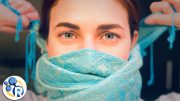
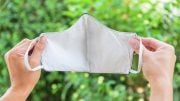
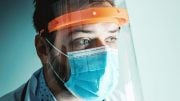

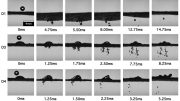
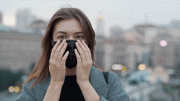

Be the first to comment on "COVID, One Year Later: What Do We Know Now? [Video]"